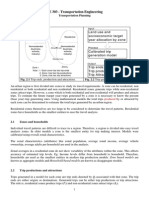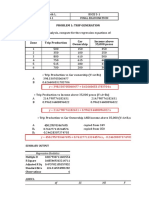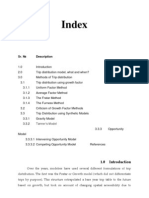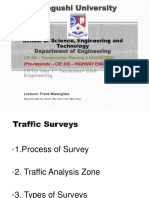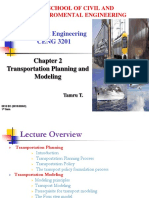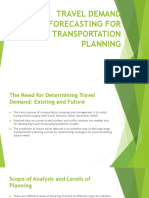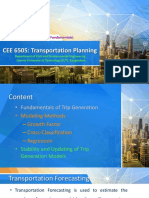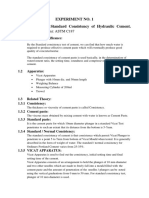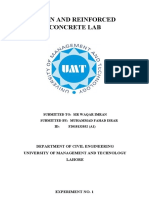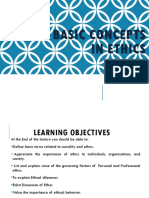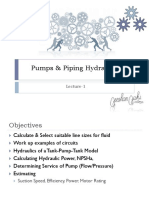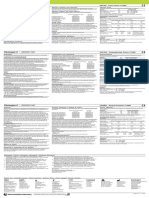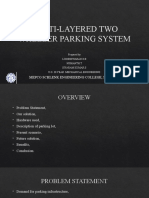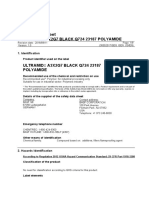100% found this document useful (1 vote)
886 views49 pagesLecture 3 - Trip Generation: Transportation Planning
Trip generation is the first step in transportation planning which determines the number of trips beginning or ending in each transportation analysis zone (TAZ). It establishes the framework for subsequent modeling steps and controls total trip numbers. Trip generation relates trip making intensities to land use types and amounts through either aggregate or disaggregate models. Common independent variables in regression models for trip production include household size, employment, and vehicle ownership. Multiple regression analysis relates trip productions and attractions as dependent variables to population, dwelling units, automobiles, and employment as independent variables through mathematical functions.
Uploaded by
Israr MuhammadCopyright
© © All Rights Reserved
We take content rights seriously. If you suspect this is your content, claim it here.
Available Formats
Download as PDF, TXT or read online on Scribd
100% found this document useful (1 vote)
886 views49 pagesLecture 3 - Trip Generation: Transportation Planning
Trip generation is the first step in transportation planning which determines the number of trips beginning or ending in each transportation analysis zone (TAZ). It establishes the framework for subsequent modeling steps and controls total trip numbers. Trip generation relates trip making intensities to land use types and amounts through either aggregate or disaggregate models. Common independent variables in regression models for trip production include household size, employment, and vehicle ownership. Multiple regression analysis relates trip productions and attractions as dependent variables to population, dwelling units, automobiles, and employment as independent variables through mathematical functions.
Uploaded by
Israr MuhammadCopyright
© © All Rights Reserved
We take content rights seriously. If you suspect this is your content, claim it here.
Available Formats
Download as PDF, TXT or read online on Scribd
/ 49





